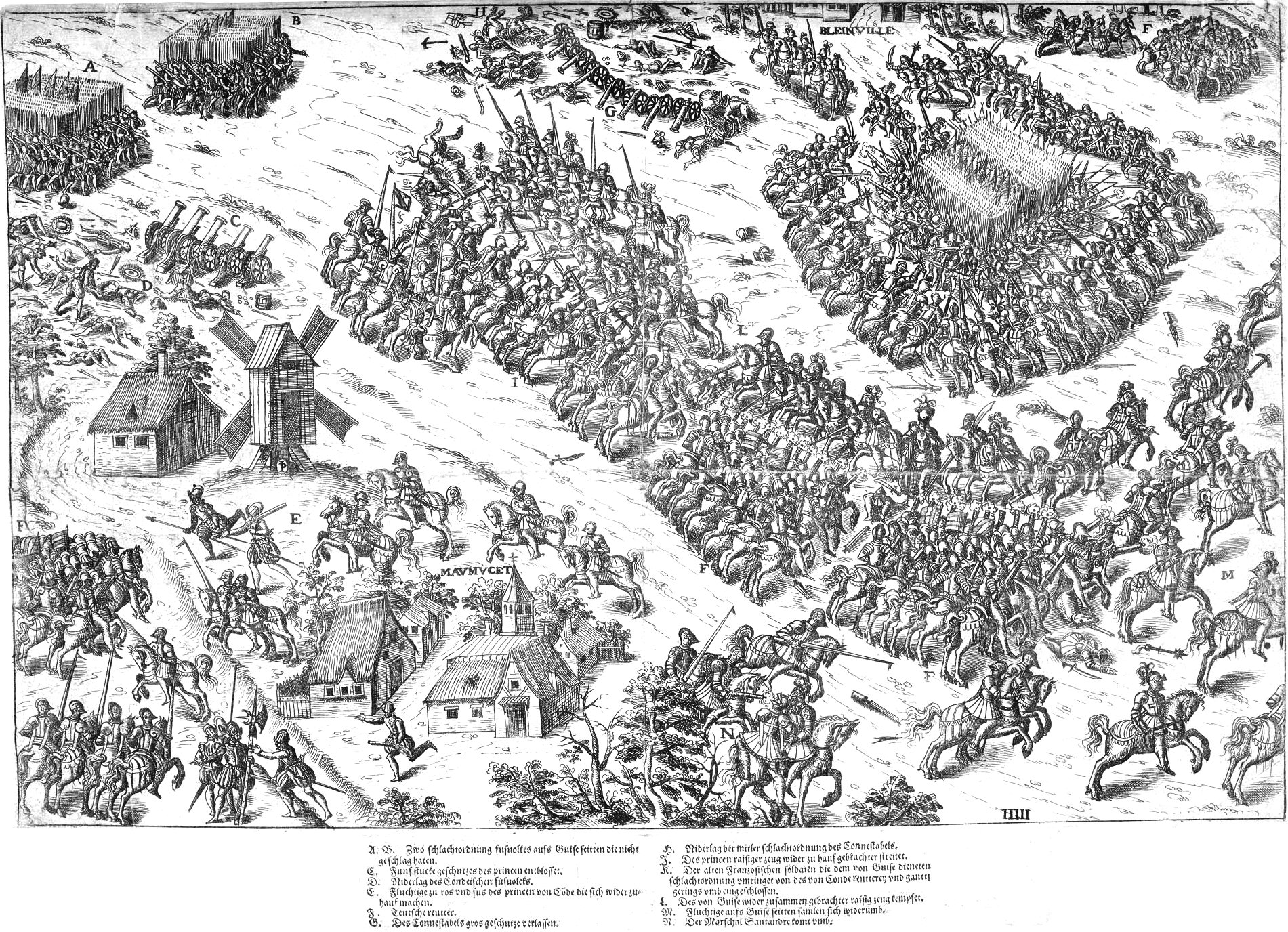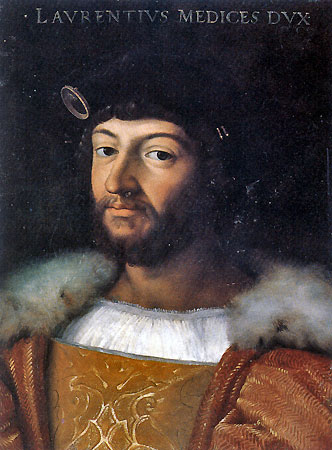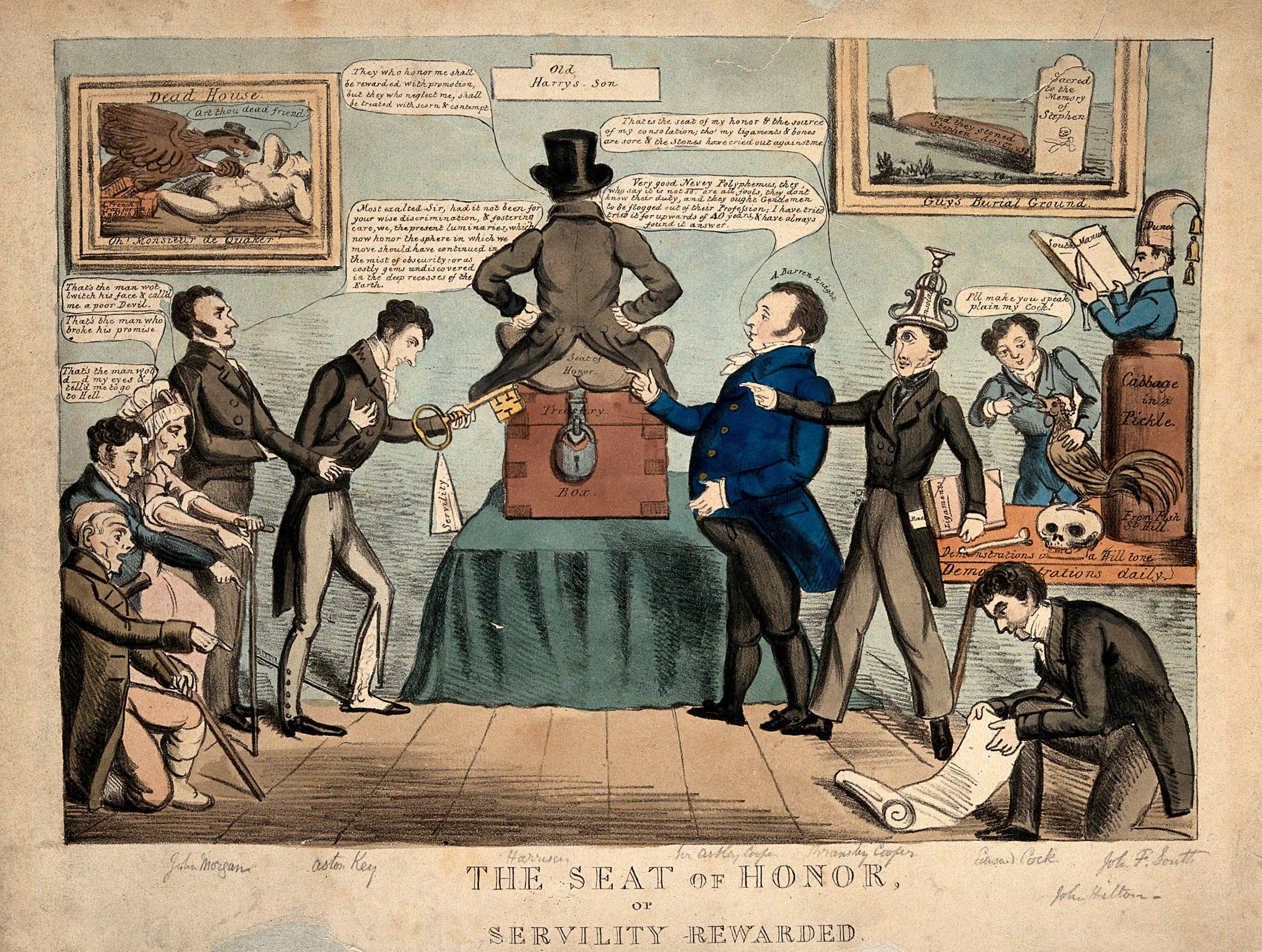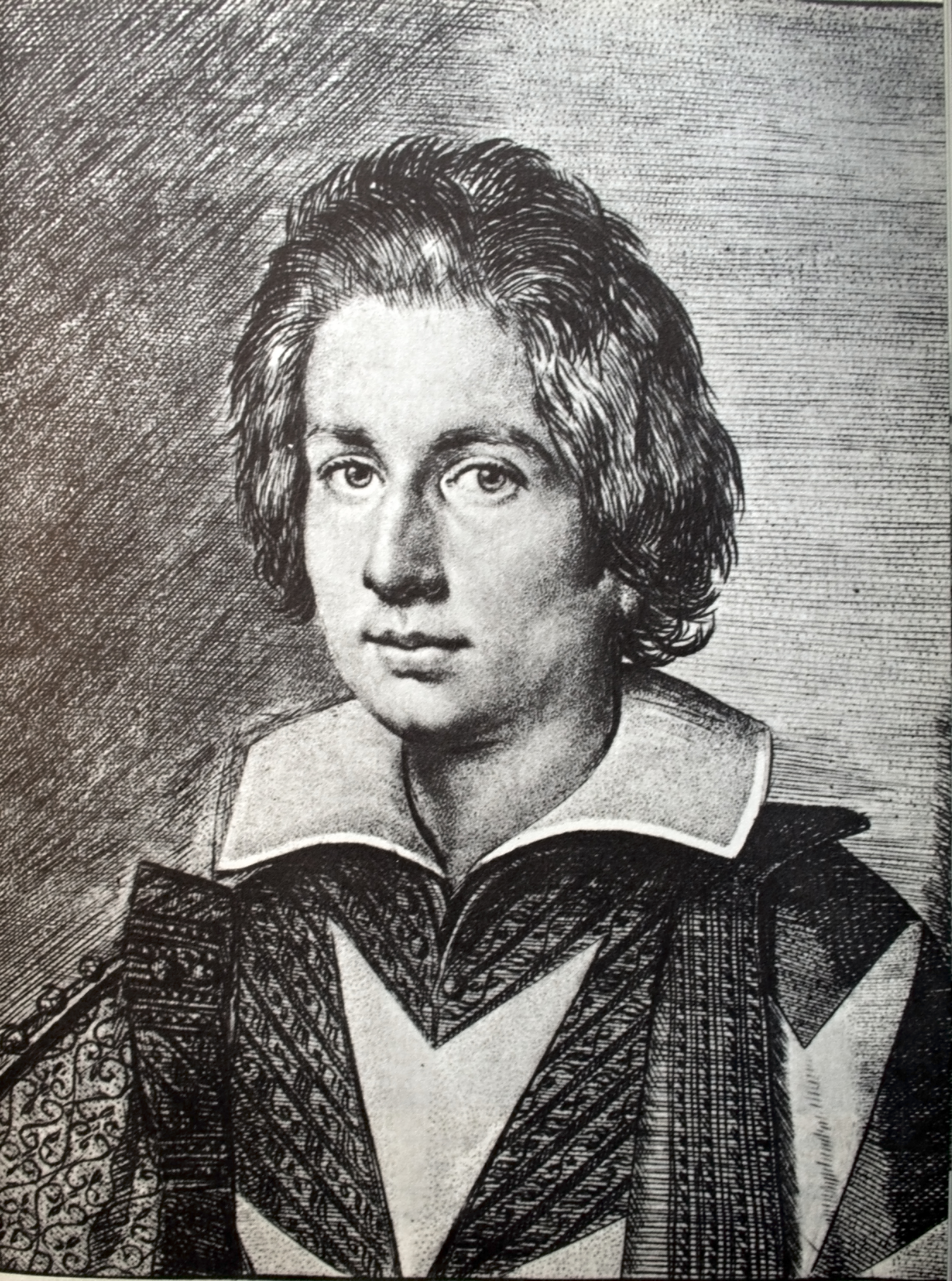|
Carlo Barberini (1562–1630)
Carlo Barberini, Duke of Monterotondo, (28 May 1562 – 26 February 1630) was an Italian nobleman of the Barberini family and lieutenant general of the papal army. He was the brother of Maffeo Barberini, who was elected to the papal throne as Pope Urban VIII. Carlo Barberini was the son of Antonio Barberini and Camilla Barbadori. As their eldest son he became patriarch of the Barberini family. In 1594, he married Costanza Magalotti (1575–1644), daughter of Vincenzo Magalotti and Clarice Capponi and sister of Lorenzo Magalotti. They had six children including Taddeo Barberini, Francesco Barberini and Antonio Barberini (Antonio the Younger). When Barberini's brother was elected to the papal throne as Pope Urban VIII, Francesco and Antonio were both elevated to Cardinal. Taddeo was given the title of Prince of Palestrina, later passed on to successive Barberini patriarchs. Barberini did not escape his brother's famous nepotism; he was appointed Gonfalonier of the Church an ... [...More Info...] [...Related Items...] OR: [Wikipedia] [Google] [Baidu] |
Carlo Barberini
Carlo Barberini (1 June 1630 – 2 October 1704) was an Italian Catholic cardinal and member of the Barberini family. He was the grand-nephew of Maffeo Barberini (Pope Urban VIII) and son of Taddeo Barberini ( Prince of Palestrina). Early life and family history Carlo Barberini was born 1 June 1630 in Rome. He was the son of Taddeo Barberini, Prince of Palestrina and Anna Colonna, daughter of Filippo I Colonna. He was the younger brother of Lucrezia Barberini and the older brother of Maffeo Barberini. He was the nephew of Taddeo's cardinal brothers, Francesco Barberini (Senior) and Antonio Barberini and was himself the uncle of Francesco Barberini (Junior), the son of his brother Maffeo. Barberini and his younger brother Maffeo played a role in reconciling the Barberini family with the papacy (at that stage Pope Innocent X) after the Wars of Castro. Maffeo married a niece of Pope Innocent X and Carlo was elevated to cardinal by Pope Innocent X in 1653. It had origi ... [...More Info...] [...Related Items...] OR: [Wikipedia] [Google] [Baidu] |
Cardinal (Catholicism)
A cardinal is a senior member of the clergy of the Catholic Church. As titular members of the clergy of the Diocese of Rome, they serve as advisors to the pope, who is the bishop of Rome and the Head of the Church#Catholic Church, visible head of the worldwide Catholic Church. Cardinals are chosen and formally created by the pope, and typically hold the title for life. Collectively, they constitute the College of Cardinals. The most solemn responsibility of the cardinals is to elect a new pope in a Papal conclave, conclave, almost always from among themselves, with a few historical exceptions, when the Holy See is Sede vacante#Vacancy of the Holy See, vacant. During the period between a pope's death or resignation and the election of his successor, the day-to-day governance of the Holy See is in the hands of the College of Cardinals. The right to participate in a conclave is limited to cardinals who have not reached the age of 80 years by the day the vacancy occurs. With the pope ... [...More Info...] [...Related Items...] OR: [Wikipedia] [Google] [Baidu] |
1562 Births
__NOTOC__ Year 1562 ( MDLXII) was a common year starting on Thursday of the Julian calendar. Events January–March * January 6 – Shane O'Neill of Tír Eoghain pleads his cause at the Palace of Whitehall in London, before Queen Elizabeth I of England, who recognises his status. He returns to Ireland on May 26, and resumes his rebellious activities by November. * January 17 – Huguenots are recognized under the Edict of Saint-Germain. * January 18 ** The Council of Trent reconvenes, after a gap of 10 years. ** Thomas Norton and Thomas Sackville's play ''Gorboduc'' is performed for the first time, before Queen Elizabeth I of England. It is the first known English tragedy, and the first English language play to employ blank verse. * February 6 – In the Mughal Empire in India, the Emperor Akbar marries Mariam-uz-Zamani, daughter of Raja Bharmal, the ruler of the Kingdom of Amber. The marriage takes place in Sambhar in what is now the state of Rajast ... [...More Info...] [...Related Items...] OR: [Wikipedia] [Google] [Baidu] |
Gonfalone Of The Church
The Banner of the Holy Roman Church (Latin: ''Vexillum''; Italian: ''Gonfalone di Santa Romana Chiesa'', occasionally ''Vessilio di San Pietro'', "Standard of Saint Peter") was the battle standard of the Papal States during the Renaissance and a symbol of the Catholic Church. The office of the Gonfalonier of the Church was originally intended to function as its bearer of the Holy See. Description The insignia was made of red cloth decorated, initially, with the image of St. Peter and occasionally later with St. Paul as well. Pope Innocent III (1198–1216) replaced these with the emblem of crossed keys surmounted by a white cross. Pope Boniface VIII (1294–1303) established the final form: a cloth of crimson silk, covered with numerous six-pointed stars embroidered in gold, bearing the image of the crossed keys surmounted by a umbraculum, or veil bearing a gold tassel at either end. The banner was attached to a long golden rod and followed the pope in his travels, including ... [...More Info...] [...Related Items...] OR: [Wikipedia] [Google] [Baidu] |
Niccolò Machiavelli
Niccolò di Bernardo dei Machiavelli (3 May 1469 – 21 June 1527) was a Florentine diplomat, author, philosopher, and historian who lived during the Italian Renaissance. He is best known for his political treatise '' The Prince'' (), written around 1513 but not published until 1532, five years after his death. He has often been called the father of modern political philosophy and political science. For many years he served as a senior official in the Florentine Republic with responsibilities in diplomatic and military affairs. He wrote comedies, carnival songs, and poetry. His personal correspondence is also important to historians and scholars of Italian correspondence. He worked as secretary to the second chancery of the Republic of Florence from 1498 to 1512, when the Medici were out of power. After his death Machiavelli's name came to evoke unscrupulous acts of the sort he advised most famously in his work, ''The Prince''. He concerned himself with the ways a ruler ... [...More Info...] [...Related Items...] OR: [Wikipedia] [Google] [Baidu] |
The Prince
''The Prince'' ( ; ) is a 16th-century political treatise written by the Italian diplomat, philosopher, and Political philosophy, political theorist Niccolò Machiavelli in the form of a realistic instruction guide for new Prince#Prince as generic for ruler, princes. Many commentators have viewed that one of the main themes of ''The Prince'' is that immoral acts are sometimes necessary to achieve political glory.: "Machiavelli is the only political thinker whose name has come into common use for designating a kind of politics, which exists and will continue to exist independently of his influence, a politics guided exclusively by considerations of expediency, which uses all means, fair or foul, iron or poison, for achieving its ends – its end being the aggrandizement of one's country or fatherland – but also using the fatherland in the service of the self-aggrandizement of the politician or statesman or one's party". From Machiavelli's correspondence, a version was apparentl ... [...More Info...] [...Related Items...] OR: [Wikipedia] [Google] [Baidu] |
Comune
A (; : , ) is an administrative division of Italy, roughly equivalent to a township or municipality. It is the third-level administrative division of Italy, after regions () and provinces (). The can also have the City status in Italy, title of (). Formed according to the principles consolidated in Medieval commune, medieval municipalities, the is provided for by article 114 of the Constitution of Italy. It can be divided into , which in turn may have limited power due to special elective assemblies. In the autonomous region of the Aosta Valley, a is officially called a in French. Overview The provides essential public services: Civil registry, registry of births and deaths, registry of deeds, and maintenance of local roads and public works. Many have a (), which is responsible for public order duties. The also deal with the definition and compliance with the (), a document that regulates the building activity within the communal area. All communal structures ... [...More Info...] [...Related Items...] OR: [Wikipedia] [Google] [Baidu] |
Gonfalonier Of The Church
The Gonfalonier of the Church or Papal Gonfalonier (, "standard-bearer"; ) was a military and political office of the Papal States. Originating from the use of the Gonfalone of the Church, Papal banner during combat, the office later became largely ceremonial and political. At his nomination, the gonfalonier was given two banners, one with the arms of the Church (''vexillum cum armis Ecclesiæ'') and another with the arms of the reigning pope (''cum armis suis''). The gonfalonier was entitled to include ecclesiastical emblems (the Keys of St. Peter and the umbriculum, ombrellino) upon his own arms, usually only during his term of office but on occasion permanently. Pope Innocent XII ended the rank, along with the Captain General of the Church, captaincy general, and replaced them both with the position of flag-bearer of the Holy Roman Church (), which later became hereditary in the Naro Patrizi. List of gonfaloniers of the Church See also * Gonfaloniere * Gonfalone of the Ch ... [...More Info...] [...Related Items...] OR: [Wikipedia] [Google] [Baidu] |
Nepotism
Nepotism is the act of granting an In-group favoritism, advantage, privilege, or position to Kinship, relatives in an occupation or field. These fields can include business, politics, academia, entertainment, sports, religion or health care. In concept it is similar to cronyism. The term originated with the assignment of nephews, sons, or other relatives to important positions by Catholic popes and bishops. It has often been witnessed in Autocracy, autocracies, whereby Aristocracy, traditional aristocracies usually contested amongst themselves in order to obtain leverage, status, etc. Nepotism has been criticized since ancient history by philosophers including Aristotle, Thiruvalluvar, Valluvar, and Confucius, condemning it as both evil and unwise. Origins The term comes from Italian word ''nepotismo'',"Nepotism." Dictionary.com. ... [...More Info...] [...Related Items...] OR: [Wikipedia] [Google] [Baidu] |
Palestrina
Palestrina (ancient ''Praeneste''; , ''Prainestos'') is a modern Italian city and ''comune'' (municipality) with a population of about 22,000, in Lazio, about east of Rome. It is connected to the latter by the Via Prenestina. It is built upon the ruins of the ancient city of Praeneste. Palestrina is the birthplace of composer Giovanni Pierluigi da Palestrina. Geography Palestrina is sited on a spur of the Monti Prenestini, a mountain range in the central Apennines. Modern Palestrina borders the following municipalities: Artena, Castel San Pietro Romano, Cave, Gallicano nel Lazio, Labico, Rocca di Cave, Rocca Priora, Rome, San Cesareo, Valmontone, Zagarolo. History Ancient Praeneste Ancient mythology connected the origin of Praeneste to Ulysses, or to other fabled characters such as Caeculus, Telegonus, Erulus or ''Praenestus''. The name probably derives from the word ''Praenesteus'', referring to its overlooking location. Early burials show that the site w ... [...More Info...] [...Related Items...] OR: [Wikipedia] [Google] [Baidu] |
Antonio Barberini
Antonio Barberini (5 August 1607 – 3 August 1671) was an Italian people, Italian Roman Catholic Church, Catholic Cardinal (Catholicism), cardinal, Roman Catholic Archdiocese of Reims, Archbishop of Reims, military leader, patron of the arts and a prominent member of the Barberini, House of Barberini. As one of the cardinal-nephews of Pope Urban VIII and a supporter of Kingdom of France, France, he played a significant role at a number of the papal conclaves of the 17th century. With his brothers Cardinal Francesco Barberini (seniore), Francesco Barberini and Taddeo Barberini he helped to shape politics, religion, art and music of 17th century Italy. He is sometimes referred to as ''Antonio the Younger'' or ''Antonio Barberini iuniore'' to distinguish him from his uncle Antonio Marcello Barberini. Early life Barberini was born on 5 August 1607 in Rome, the youngest of 6 children to Carlo Barberini (1562-1630), Carlo Barberini and Costanza Magalotti (sister of Lorenzo Magalotti ... [...More Info...] [...Related Items...] OR: [Wikipedia] [Google] [Baidu] |
Statue Of Carlo Barberini
The Statue of Carlo Barberini was a large statue of the brother of Pope Urban VIII, Carlo Barberini, erected in the Palazzo dei Conservatori, Rome, following his death in 1630. The statue made use of an existing antique statue of Julius Caesar. The Roman authorities then commissioned the two most renowned sculptures of the day, Gianlorenzo Bernini and Alessandro Algardi, to add to the torso; Bernini worked on the head and Algardi on the limbs. See also *List of works by Gian Lorenzo Bernini The following is a list of works of sculpture, architecture, and painting by the Italian Baroque artist Gian Lorenzo Bernini. The numbering follows Rudolph Wittkower's Catalogue, published in 1966 in ''Gian Lorenzo Bernini: The Sculptor of the Roma ... Notes References * Further reading * * * External links * {{Gian Lorenzo Bernini 1630s sculptures Marble sculptures in Italy Sculptures by Gian Lorenzo Bernini ... [...More Info...] [...Related Items...] OR: [Wikipedia] [Google] [Baidu] |





